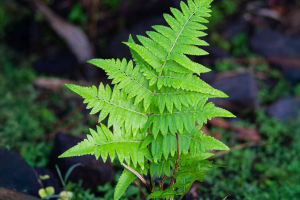Imagine biting into a crisp, juicy tomato harvested from your own garden—the flavor often far richer than anything from a supermarket.
Growing your own vegetables connects you to the entire food journey, from tiny seed to nourishing meal. But beyond taste, home gardening offers a host of benefits, including better nutrition, cost savings, and a deeper appreciation for the natural world.
If you've ever thought about planting your own veggies but didn't know where to start, let's explore the process step-by-step and highlight how even small efforts can lead to big rewards.
Starting With Seeds: The Foundation of Growth
Every vegetable begins as a seed, a tiny package holding all the information needed to grow a plant. Selecting quality seeds suited to your climate and growing space is key.
Some seeds, like lettuce or radishes, germinate quickly and are forgiving for beginners. Others, like tomatoes or peppers, take longer and require more attention.
Here's a deep insight: the seed's environment during germination—temperature, moisture, and light—affects its future growth dramatically. Maintaining consistent warmth and keeping soil moist but not waterlogged creates the ideal start.
Using seed trays or small pots indoors can give seedlings a head start before moving them outside, extending the growing season and improving survival rates.
Transplanting and Care: Nurturing Growth
Once seedlings develop a few true leaves, it's time to transplant them to larger pots or garden beds. This step requires careful handling to avoid root damage and stress.
During growth, vegetables need:
• Regular watering: Soil should be kept moist but well-drained to prevent root rot.
• Adequate sunlight: Most vegetables require 6–8 hours of sunlight daily for optimal photosynthesis.
• Nutrient supply: Fertilizing with balanced nutrients supports healthy development and yields.
One often overlooked tip: mulching around plants conserves moisture, reduces weeds, and regulates soil temperature.
Harvesting: Timing and Technique Matter
Knowing when to harvest is crucial for flavor and nutrition. Each vegetable has a "peak" maturity—harvesting too early or too late affects taste and texture.
For example, leafy greens like spinach are best picked young and tender, while root vegetables like carrots should be harvested when fully sized but before becoming tough.
Use clean, sharp tools to avoid damaging plants during harvest, which can prolong their productive life.
Health and Environmental Benefits of Home-Grown Vegetables
Growing your own food brings direct benefits beyond fresh taste:
1. Nutrient Density: Home-grown vegetables often contain more vitamins and antioxidants because they're consumed soon after harvest, reducing nutrient loss.
2. Reduced Chemical Exposure: You control what goes on your plants, avoiding pesticides and synthetic fertilizers if desired.
3. Sustainability: Local growing cuts down on food miles and packaging waste, benefiting the environment.
4. Mental Wellness: Gardening reduces stress and promotes physical activity, contributing to overall health.
Experts like those from the American Society for Horticultural Science emphasize that even small-scale vegetable gardening can improve diet quality and foster healthy habits.
From Garden to Table: The Joy of Self-Sufficiency
There's something deeply satisfying about preparing meals from ingredients you nurtured yourself. It creates a meaningful connection with food, encouraging mindful eating and reducing waste.
Even if space is limited, container gardening or vertical setups can provide fresh produce on balconies or windowsills.
As you develop your garden, you'll learn to observe plants closely, adapt care routines, and celebrate successes—each harvest a reminder of your effort's tangible rewards.
Whether you dream of a sprawling backyard patch or a simple herb pot on the kitchen counter, growing vegetables at home is a journey full of learning and delight. What will you plant first on your path from seed to plate?


